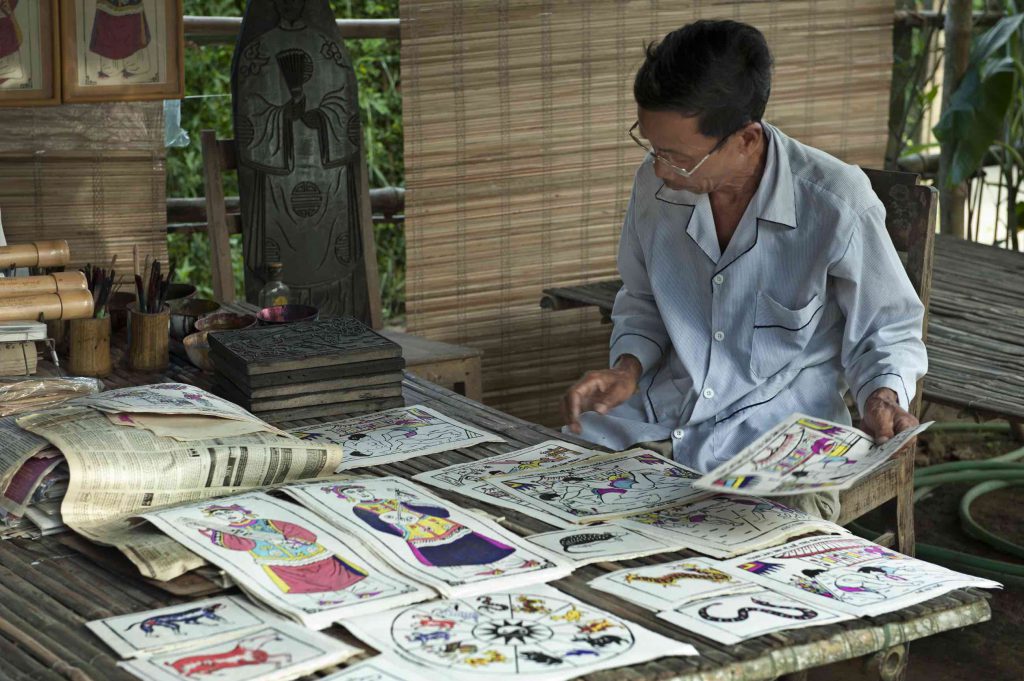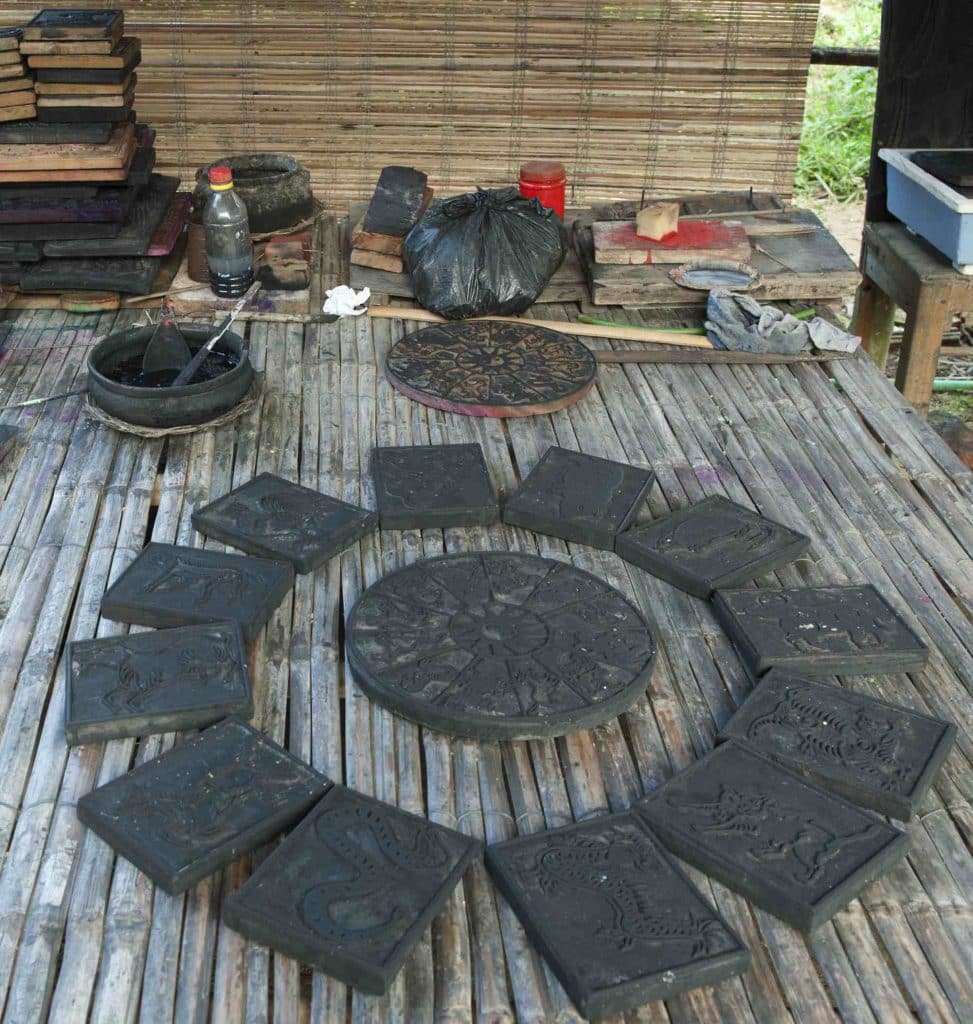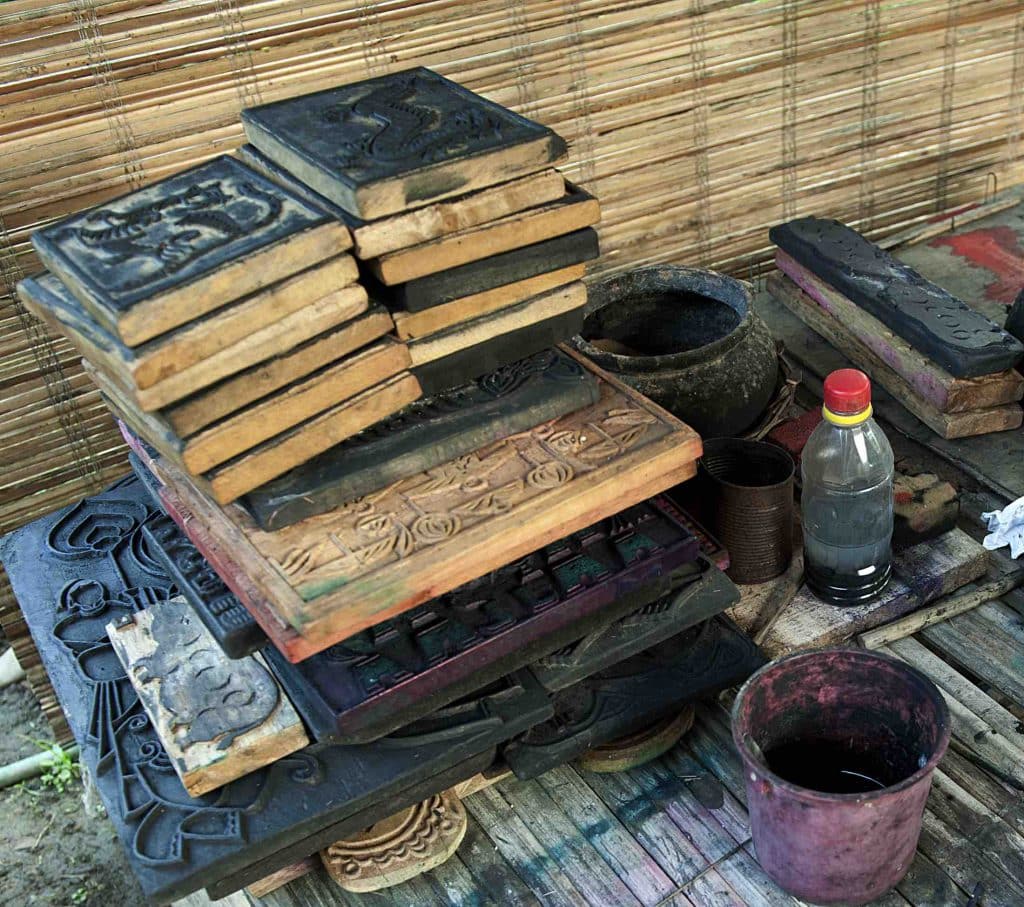Story: Nguyet Anh
Photos: Truong Vung
In the final weeks of the lunar year, families in Sinh Village are busy producing traditional worship prints.
Before the Lunar New Year, many families in Sinh Village are busy making traditional images that will be used to worship on the last night of the lunar year. Traditional prints have been produced in Sinh Village for more than 500 years. Sinh Village’s drawings are used to worship in the middle of the lunar month, on the first day of the lunar month, and especially on the final day of the lunar year. People burn these drawings along with paper money and votive papers. These drawings are intended to bring good luck. Sinh Village supplies them to markets in Hue and to markets in Da Nang, Quang Tri, Quang Nam, etc.

Making these images requires great skill. The drawings are printed on wood-blocks that are carved with sophisticated designs. There are many types and sizes of prints. In the past, the images were printed on do paper, a handmade paper made from the pulp of the Rhamnoneuron tree. Do paper typically measures 25×70 centimeters. It can be cut into smaller pieces. If the drawing is big, the craftsmen lay the wood-block on its back and use a spreading tool (a dried piece of coconut) to spread black color onto the wood-block. The paper is applied and rubbed with a sponge to transfer the color. For smaller images, the papers are placed under the wood-block. The black prints are left to dry before being colored. The wood-blocks are made from jackfruit wood. The process of coloring requires care, speed and skill.
Sinh drawings usually depict innocence, simplicity and optimism. There are about 50 drawing topics, most of which are related to old beliefs. Along with drawings of beautiful women there are many drawings depicting daily life. There are drawings of men and women and boys and girls; kitchen drawings; drawings of old men’s and women’s clothing; drawings of traditional weaponry; and drawings of domestic animals. Some “Conh anh” drawings may be called “Offering life for another” drawings, for they are offered and burned as substitutes for the living. A family will buy a “Cong anh” drawing for each member of the family to burn on the last night of the year. If they have livestock, they will burn the same number of related “Cong anh” drawings so as to help their animals to remain healthy.
The end of the lunar year is a busy time for everyone. If you visit Sinh Village at this time, you will see people of all ages working busily. Adults mix the colors, spread the drawings onto the wood-blocks and color in the prints. Children will take the drawings to dry in the sun, or sit near their elders and watch. It is very exciting and interesting.

Since this craft is time-consuming and hard to learn, today, it is being practiced by fewer families in Sinh Village. Like everything else, the process has changed. In the past, colors were mixed from natural pigments. Dung leaves were mixed with hoe buds to create light yellow. Malaba spinach was used to make green. Hoe seeds created orange. Bang leaves were used to make red. And ash mixed with boiled well water was used to make black. Today, chemical pigments are used. Machine-made paper has replaced handmade do paper, except for special orders.

Visitors to Sinh Village should seek out Mr. Ky Huu Phuoc. Now 64 years old, Mr. Phuoc has contributed to the regeneration of this traditional craft in Sinh Village. He is the ninth generation of his family to make these special worship prints.
Getting there:
Today, Sinh Village is known as Lai An Village. It lies in Phu Mau Commune, Phu Vang District, nine kilometers east of Hue City. Vietnam Airlines offers daily flights from Hanoi and HCM City to Hue.










